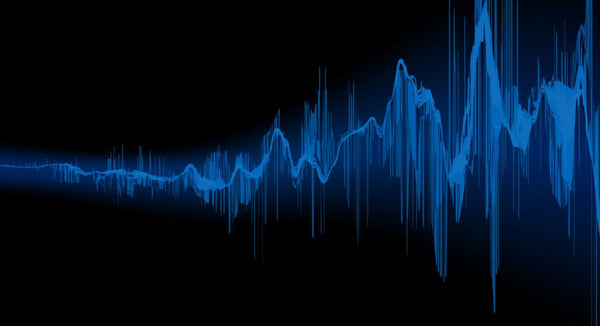
We now live in a time when audio technology has advanced and evolved to the point that we can have an even better listening experience.
Sampling rate and bit depth are two technical components that are widely used to evaluate digital audio formats.
-
Sampling Rate

It is a term we very often hear about but what exactly does it mean?
The sampling rate is the number of audio samples recorded each second. It is measured in Hertz or samples per second.
In other words, It refers to the number of times an analogue signal is sampled per second in order to convert it to digital audio. A higher sampling rate will help in providing a high-fidelity conversion from analog sound waves to digital audio.
CDs, for example, contain audio that was converted at a rate of 44.1 kHz/second, which means the original analogue recording was sampled 44,100 times for every second of music.
High-res audio, on the other hand, often uses sampling rates of 96 kHz or 192 kHz, which are up to four times the sampling rate of a CD. As a result, digital audio is a more precise and full representation of the analogue signal.
Although sampling rate is crucial (particularly for reproducing high frequencies), it is only one component of hi-res audio; bit depth is also important.
-
Audio Sampling

Audio sampling is a process in which a musical source transforms into a digital file. This takes place when the samples of the audio source are taken along the soundwaves at regular intervals. The more samples you take - known as the ‘sample rate’ - the more closely the final digital file will resemble the original.
-
Bit Depth

Every sample taken while making an audio recording needs to be stored within your computer’s ‘bits’. The higher the number of bits that are used to record each sample, the better the sound reproduction will take place.
In other words, a high sample rate along with a high bit depth will deliver the best audio quality in your recording. Higher the bit depth, higher will the dynamic range exist.
-
Sample Depth
Sample Depth, also known by other names like sample precision or sample size, is the level of detail or quality each sample has. It is the second most important property of an audio file or stream and is measured in bits per sample.
Each audio sample is nothing but a number, and while having a lot of numbers is needed to represent audio, it is equally necessary to have a range or “quality” of every individual number to be large enough to represent each sample or data point with precision.









